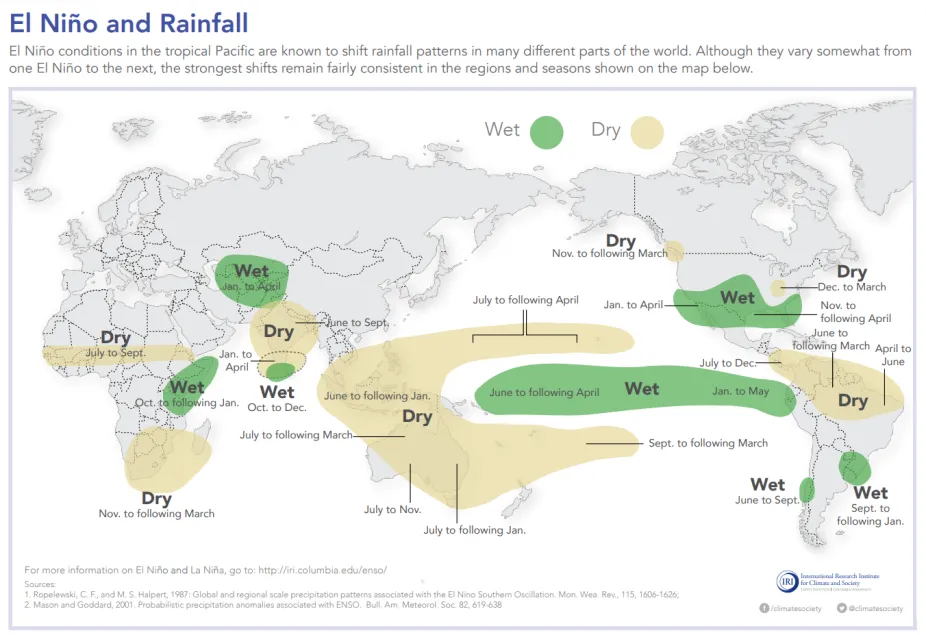Teleconnections: Changes in Weather Linked Together
Changes in the atmosphere in one place can affect weather over 1000 miles away. Scientists are trying to sort out how this works so that they can better understand and predict weather patterns worldwide. They call these patterns teleconnections.
Teleconnection patterns are caused by changes in the way air moves around the atmosphere. The changes may last from a few weeks to many months. Teleconnection patterns are natural. However, they may be changed as Earth’s climate warms.
For example, El Niño is a major teleconnection pattern created by El Niño-Southern Oscillation (ENSO) changes to the atmosphere and ocean. During El Niño events cold and dry air is blown into places that typically have warm and moist air. This causes a big change in the weather. For example, the amount of clouds in one area could lead to changes in precipitation elsewhere. Changes in the temperature of the ocean surface in the tropical Pacific Ocean also affect the weather.

El Niño conditions cause changes in the amount of precipitation worldwide.
National Weather Service
Other areas are affected by El Niño, too. Southern Alaska, for example, can become warmer than usual. And the U.S. Gulf Coast can be cooler and more rainy than usual. El Niño even has an impact as far away as West Antarctica. There is evidence from ice cores that during the strong El Niño event from 1939-1942 temperatures in West Antarctica were 5-7 C (9-13 F) warmer than normal.
There are other teleconnection patterns as well. The North Atlantic Oscillation causes unusual weather in the Northern Hemisphere. The cause is the North Atlantic Oscillation (NAO) - changes in the intensity of a low pressure system over Iceland and a high pressure system in the subtropical Atlantic. During the winter of 1995-96 the changes in pressure caused cold and snowy weather in eastern North America, bitter cold in Northern Europe, and wet weather in southern Europe and northern Africa.
© UCAR with portions adapted from Windows to the Universe (© 2008 NESTA)